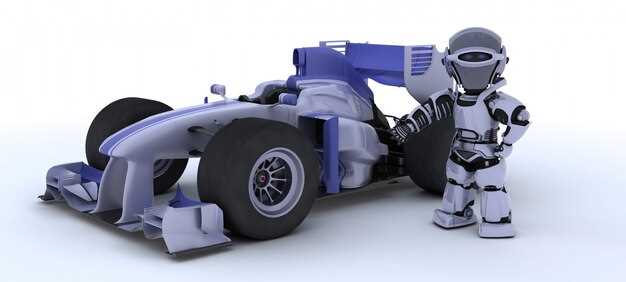
In the high-stakes world of motorsport, endurance racing stands as a definitive test of both human skill and engineering innovation. Amidst the harsh conditions and relentless competition, vehicles are categorized into various classes, each serving distinct purposes. Two prominent categories that often come under scrutiny are prototypes and production racers. While both are designed to perform exceptionally on the track, their characteristics, goals, and technological advancements set them apart in significant ways.
Prototypes are often considered the pinnacle of racing engineering. These vehicles are specifically designed from the ground up to excel in endurance racing scenarios. They feature advanced materials, lightweight designs, and cutting-edge technology, allowing them to push the envelope of performance. In contrast, production racers are based on consumer vehicles, showcasing the adaptability of existing designs to competitive settings. This breed of racer aims to marry performance with practicality, providing a bridge between everyday driving experiences and the thrill of racing.
Analyzing the differences between prototypes and production racers reveals essential insights into their engineering philosophies and racing strategies. While prototypes thrive on innovation and absolute speed, production racers often bring reliability and brand representation to the forefront. Understanding these distinctions is crucial for fans, engineers, and teams aiming to navigate the complex landscape of endurance racing.
Prototypes Versus Production Racers: A Comparative Analysis
In the realm of racing, understanding the distinction between prototypes and production racers is essential for enthusiasts and competitors alike. Prototypes are vehicles specifically designed for competition, often featuring cutting-edge technology and materials that are not typically found in commercial models. They prioritize performance and aerodynamics over everyday usability.
Production racers, on the other hand, are modified versions of standard consumer vehicles. These cars are adapted for the racetrack while maintaining some semblance of their original design. As a result, they strike a balance between competitive performance and practicality, making them more accessible to a broader audience.
One key advantage of prototypes is their ability to incorporate advanced engineering solutions that push the limits of speed and handling. These cars benefit from dedicated research and development budgets, allowing manufacturers to experiment with innovative technologies. This results in higher speeds and better overall performance in various racing conditions.
In contrast, production racers are often bound by regulations that dictate certain design aspects, such as weight and engine displacement. This limitation can lead to a more level playing field, as teams work within these constraints to optimize their vehicles. The connection to commercial models also helps manufacturers gauge consumer interest and feedback, ensuring that their innovations resonate with potential buyers.
Another significant difference lies in the cost of development. Building a prototype usually involves substantial investment, as these vehicles often require extensive testing and refinement. Production racers, while still costly, are generally less expensive to develop due to their reliance on existing frameworks and components.
Ultimately, both prototypes and production racers play vital roles in the automotive industry. Prototypes challenge the status quo and showcase what is technically feasible, while production racers help bridge the gap between the racetrack and the road. Each contributes uniquely to the evolution of race car technology, influencing future designs and inspiring next-generation vehicles.
Understanding the Design Differences Between Prototype and Production Racers
When examining the realm of motorsports, particularly in racing events that emphasize endurance, the distinction between prototype and production racers becomes crucial. Prototype racers are purpose-built vehicles designed specifically for competition, featuring cutting-edge technology and materials. These cars often showcase innovative aerodynamic designs, lightweight structures, and high-performance components that can be adjusted continuously to enhance track performance.
In contrast, production racers are derived from commercial vehicles and must adhere to regulations that govern both their design and performance. While they incorporate racing modifications, they retain many original features to satisfy homologation requirements. This means that production racers must balance racing capabilities with consumer usability, resulting in a heavier build and less radical design compared to prototypes.
Aerodynamics plays a pivotal role in both types of racers, but prototypes often push boundaries to achieve optimal airflow and downforce. Their shape is meticulously crafted to minimize drag and maximize grip, enabling faster lap times under competitive conditions. Production racers, while benefiting from advanced aerodynamic principles, must operate within a framework that limits the extent of alterations due to regulatory constraints.
Another key difference lies in the materials used. Prototype racers frequently utilize advanced composites and alloys which enhance strength while minimizing weight, thus contributing to better speed and agility. Production cars, however, are generally constructed using more conventional materials that are cost-effective for mass production, leading to a not-so-lightweight configuration that may hinder absolute performance in a racing scenario.
Ultimately, both prototype and production racers serve unique purposes in the racing world. Prototypes are exclusively engineered for maximum performance in endurance races, showcasing the peak of technological advancement. Production racers, while modified for better racing outcomes, reflect a compromise between consumer demands and competitive requirements, making them more accessible to both the racing community and the general public.
Evaluating Performance Metrics in Endurance Racing Scenarios

Endurance racing presents unique challenges that necessitate a comprehensive framework for evaluating performance metrics. Unlike traditional racing formats, endurance events emphasize durability, efficiency, and strategy over sheer speed. This analysis aims to highlight key performance indicators that teams and drivers must consider when assessing their effectiveness in endurance racing scenarios.
- Lap Time Consistency: Maintaining consistent lap times throughout the race is crucial. Teams should analyze variations in lap times to identify performance drip and optimize pit strategies.
- Fuel Efficiency: In endurance racing, fuel consumption can significantly impact race strategy. Calculating the miles per gallon or liters per 100 kilometers helps teams plan pit stops effectively and minimize time spent refueling.
- Tire Wear Rate: Understanding how tire performance degrades over time can affect the vehicle’s handling and overall speed. Teams must monitor tire conditions to determine the optimal time for tire changes to maximize grip without sacrificing durability.
- Driver Stamina: Driver fatigue can influence performance towards the race’s end. Metrics like heart rate and reaction times should be monitored to ensure drivers are performing at peak levels.
- Mechanical Reliability: The ability of a car to withstand rigorous conditions is paramount. Teams need to track failure rates and performance under stress to preemptively address potential mechanical issues.
In addition to the above metrics, it is essential to leverage data analytics and telemetry to gain insights. Real-time data reporting allows teams to make informed decisions and adapt strategies mid-race.
- Data Acquisition Systems: Utilize advanced telemetry systems for real-time monitoring of vehicle performance metrics.
- Simulation Tools: Implement predictive modeling to optimize vehicle setups based on expected race conditions.
- Post-Race Analysis: Conduct thorough evaluations of performance data post-race to identify strengths and weaknesses.
In conclusion, evaluating performance metrics in endurance racing is vital for success. By focusing on key indicators such as lap time consistency, fuel efficiency, tire wear, driver stamina, and mechanical reliability, teams can substantially improve their strategies and overall performance in long-distance racing scenarios.
Cost Implications and Market Viability of Prototype Versus Production Cars

The cost implications of developing prototype versus production racing cars are significant and multifaceted. Prototype vehicles, designed primarily for endurance racing, often command higher research and development expenses due to their advanced materials, cutting-edge technology, and innovative engineering. The need for continuous improvements in aerodynamic efficiency and performance typically drives costs up, as teams seek to push the boundaries of automotive design. Additionally, prototypes require extensive testing on race tracks, which further increases operational expenses.
Contrastingly, production race cars are built on more standardized platforms, allowing manufacturers to leverage existing technologies and production processes. This standardization reduces production costs significantly, making these vehicles more financially viable for broader markets. Furthermore, production racers can be manufactured in larger quantities, offering economies of scale that prototypes inherently lack. The ability to produce models that can also be sold to consumers increases the market viability of production racing cars, ensuring a return on investment more readily than their prototype counterparts.
Market acceptance of both types of vehicles also differs. While prototypes draw attention during prestigious events due to their technological prowess and the prestige associated with endurance racing victories, they appeal to a niche market. On the other hand, production racers cater to a larger audience of motorsport enthusiasts and consumers looking for performance-oriented vehicles. This broader appeal can enhance market viability for production models, making them not only a choice for racers but also desirable for everyday driving.
In summary, while prototype cars focus on maximizing performance and innovation at a high cost, their market appeal is limited. Production racing cars, with lower development costs and a wider audience, present a more viable business model in today’s automotive landscape. The balance between cost and marketability ultimately defines the success of vehicles in the racing arena.











